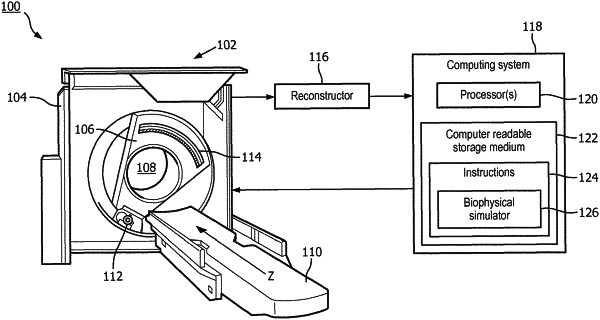| CPC A61B 34/10 (2016.02) [G16H 20/40 (2018.01); G16H 50/50 (2018.01); A61B 6/507 (2013.01); A61B 2034/104 (2016.02); A61F 2/2427 (2013.01)] | 15 Claims |

|
1. A system for processing medical images, comprising:
a memory that stores a plurality of instructions;
at least one processor that couples to the memory and is configured to execute the plurality of instructions to:
receive a cardiac image;
receive a model of a cardiac valve device;
segment the cardiac image to determine a shape of cardiac anatomy of interest;
determine boundary conditions based on the segmentation;
simulate a pre-implant arterial blood flow metric and/or a pre-implant pressure metric according to the boundary conditions and the segmentation;
virtually implant the model into the segmented cardiac image;
determine the boundary conditions based on the segmentation with the virtually implanted model;
simulate a post-implant arterial blood flow metric and/or a post-implant pressure metric according to the boundary conditions, the segmentation, and the virtually implanted model; and
predict an effect of implanting the cardiac valve device based on the simulations.
|